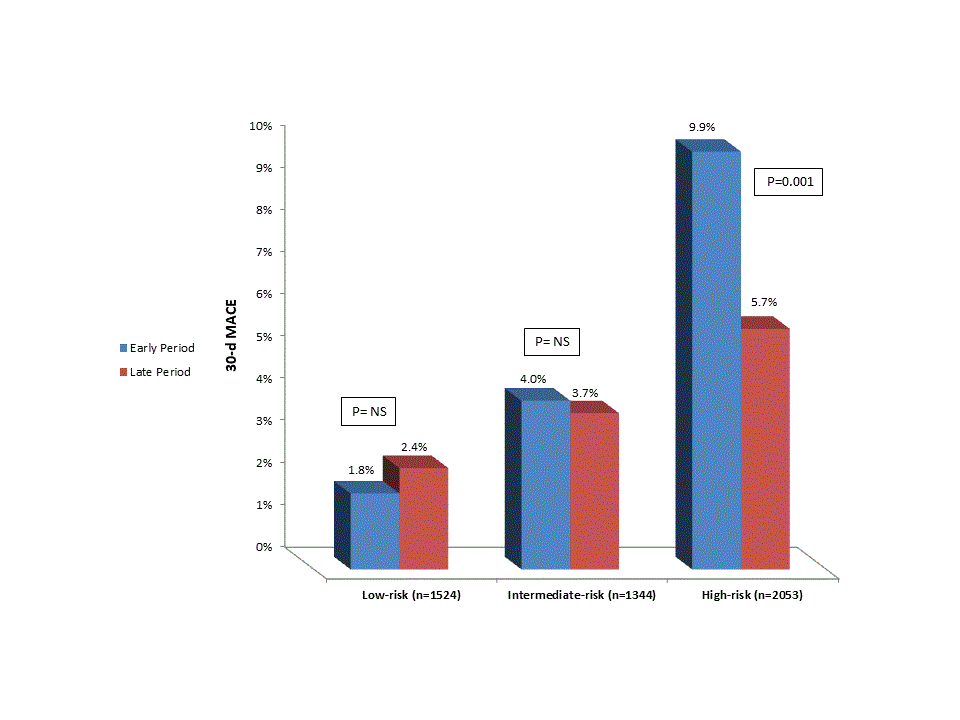
Temporal Trends of the Management and Outcomes of Patients after Myocardial Infarction According to the Risk for Recurrent Cardiovascular Events
2Sackler Faculty of Medicine, Tel Aviv University
Background: Following Myocardial Infarction (MI), patients are at increased risk for recurrent cardiovascular events, particularly during the immediate period. Yet some patients are at higher risk than others, owing to their clinical characteristics and comorbidities, these high-risk patients are less often treated with guideline-recommended therapies.
Aim: To examine temporal trends in treatment and outcomes of patients with MI according to the TIMI risk score for secondary prevention (TRS2°P), a recently validated risk stratification tool.
Methods: A retrospective cohort study of patients with an acute MI, who underwent PCI and were discharged alive between 2004-2016. Temporal trends were examined in the early (2004-2010) and late (2011-2016) time-periods. Patients were stratified by the TRS2°P to a low (≤1), intermediate (2) or high-risk group (≥3). Clinical outcomes included 30-day MACE (death, MI, TVR, CABG, UA or stroke) and 1-year mortality.
Results: Among 4921 patients, 31% were low-risk, 27% intermediate-risk and 42% high-risk. Compared to low and intermediate-risk patients, high-risk patients were older, more commonly female, and had more comorbidities such as hypertension, diabetes, PVD, and CKD. They presented more often with NSTEMI and 3-vessel disease. High-risk patients were less likely to receive drug eluting stents and potent anti-platelet drugs, among other guideline-recommended therapies. Evidently, they experienced higher 30-day MACE (8.1% vs. 3.9% and 2.1% in intermediate and low-risk, respectively,P<0.001) and 1-year mortality (10.4% vs. 3.9% and 1.1% in intermediate and low-risk, respectively,P<0.001). During the late-period, the use of potent antiplatelets and statins increased among the entire cohort (P<0.001). However, during time, only the high-risk group demonstrated a significantly lower 30-day MACE (P=0.001). During time, there were no differences in 1-year mortality rate among all risk categories.
Conclusion: Despite a better application of guideline-recommended therapies, high-risk patients after MI are still relatively undertreated. Nevertheless, they demonstrated the most notable improvement in outcomes over time.


Powered by Eventact EMS